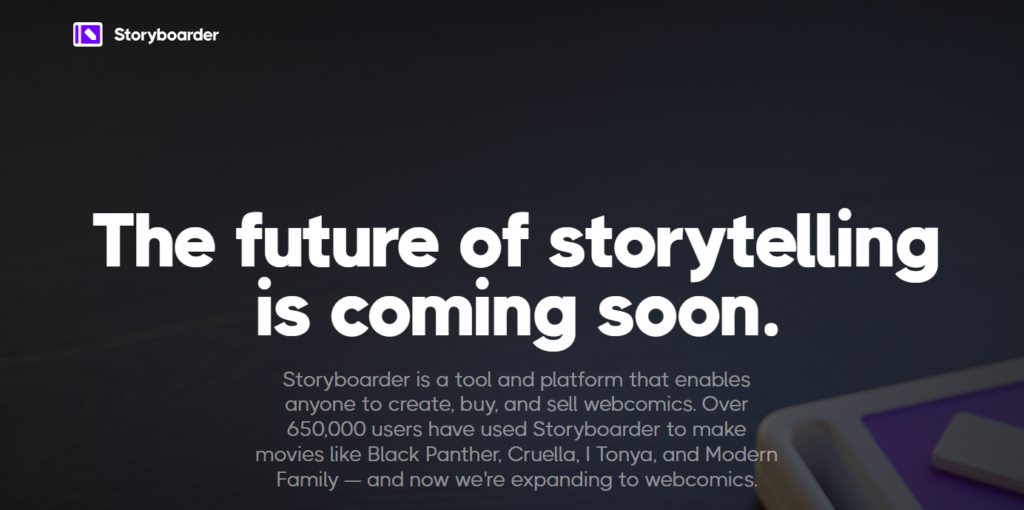Want to skyrocket your online brand’s success? Stop dreaming and start doing! Video marketing isn’t just a trend; it’s a powerful tool that can transform your business. This comprehensive guide will show you exactly how to create profitable videos that attract customers, build brand loyalty, and boost your bottom line. We’ll cover everything from planning and filming to promotion and analysis, turning your video strategy from a vague idea into a profit-generating machine.
Did you know that 86% of businesses use video as a marketing tool? That’s a huge number, and it speaks volumes about the power of video to connect with audiences and drive sales.
TL;DR
- Unlock the secrets to creating high-converting videos for your online brand.
- Master the art of video planning, filming, and editing.
- Learn proven strategies for promoting your videos and reaching your target audience.
- Discover how to track your results and optimize your video strategy for maximum ROI.
- Transform your brand’s online presence and boost your bottom line with engaging video content.
Step-by-Step Guide to Profitable Video Creation
Before you even pick up a camera, you need a rock-solid plan. What’s the ultimate aim of your videos? More brand recognition? A flood of new leads? Direct sales? Be specific! Once you’ve nailed your goals, it’s time to get to know your audience intimately. Who are you trying to reach? What keeps them up at night? What are their biggest pain points? Understanding your audience is the key to creating videos that truly resonate and deliver results. This step sets the foundation for everything that follows.
1. Define Your Goals and Target Audience
This isn’t just about vaguely wanting “more customers.” Dig deep. Are you aiming for:
- Brand Awareness: Increase visibility and recognition of your brand. Metrics: Website traffic, social media mentions, brand searches. Videos focused on storytelling, behind-the-scenes glimpses, or thought leadership content work well here.
- Lead Generation: Capture contact information from potential customers. Metrics: Number of leads generated, conversion rates from video to landing page. Videos offering valuable free resources (e.g., ebooks, webinars) in exchange for email addresses are effective.
- Direct Sales: Drive immediate purchases. Metrics: Sales directly attributed to video views, conversion rates from video to purchase. Product demos, testimonials, and limited-time offers within videos are ideal.
- Customer Engagement: Foster a stronger relationship with your existing customers. Metrics: Comments, shares, likes, and overall engagement rate. Behind-the-scenes content, Q&A sessions, and polls can boost engagement.
Once your goals are clear, define your ideal customer:
- Demographics: Age, gender, location, income, education, occupation.
- Psychographics: Values, interests, lifestyle, attitudes, opinions.
- Online Behavior: Where do they spend their time online? Which platforms do they use? What kind of content do they engage with?
Use tools like Google Analytics, social media analytics, and customer relationship management (CRM) systems to gather data about your audience. Create detailed buyer personas to represent your ideal customer segments.
2. Plan Your Video Content
Brainstorming is key. Use mind maps, whiteboards, or even sticky notes to generate ideas. Consider these video types:
- Product Demos: Show, don’t just tell. Highlight key features, benefits, and use cases. Think about different angles and close-ups to showcase details.
- Behind-the-Scenes: Humanize your brand. Show your team, your workspace, and your process. This builds trust and authenticity.
- Customer Testimonials: Social proof is powerful. Feature satisfied customers sharing their positive experiences. Get permission and use high-quality video and audio.
- Educational Content: Position yourself as an expert. Create tutorials, how-to videos, or explainer videos that provide value to your audience.
- Live Streams: Interact in real-time. Answer questions, address concerns, and build community. Promote the live stream in advance and engage with viewers during the broadcast.
- Animated Explainer Videos: Great for complex topics or abstract concepts. These videos are visually engaging and easy to understand.
- Comparison Videos: Compare your product or service to competitors. Highlight your unique selling points and advantages.
- Case Studies: Showcase successful projects or client stories. This demonstrates your expertise and builds credibility.
3. Scripting and Storyboarding
Don’t underestimate the power of a well-written script. Even informal videos benefit from a structured approach. Your script should include:
- Hook: Grab attention in the first few seconds.
- Main Points: Clearly communicate your message.
- Call to Action: Tell viewers what you want them to do next.

A storyboard visually outlines your video’s shots and transitions. It’s like a comic book version of your video, helping you plan camera angles, lighting, and overall pacing. Free tools like Storyboarder or even PowerPoint can be used for this.
4. Filming Your Video
- Equipment: While professional equipment is ideal, you can start with a smartphone and a good microphone. Invest in a tripod for stability.
- Lighting: Natural light is best, but supplement with artificial lighting if needed. Avoid harsh shadows and ensure even illumination.
- Sound: Poor audio ruins a video. Use a lavalier microphone (clip-on mic) for clear audio, especially for interviews or presentations.
- Background: Keep it clean and uncluttered. A simple, neutral background is usually best.
- Practice: Rehearse your delivery beforehand. This will help you feel more confident and natural on camera.
5. Video Editing
Editing software can range from free options like DaVinci Resolve (free version) and iMovie to professional-grade software like Adobe Premiere Pro and Final Cut Pro. Key editing tasks include:
- Cutting and Trimming: Remove unnecessary footage and create a smooth flow.
- Adding Transitions: Use transitions sparingly to guide the viewer’s eye.
- Incorporating Music and Sound Effects: Enhance the mood and engagement. Use royalty-free music and sound effects to avoid copyright issues.
- Color Correction and Grading: Improve the overall look and feel of your video.
- Adding Text and Graphics: Enhance readability and visual appeal.
- Exporting: Export your video in the correct format and resolution for your target platform.
6. Optimize for Search Engines (SEO)
YouTube is a search engine. Optimize your videos to rank higher in search results:
- Keyword Research: Identify relevant keywords related to your video’s topic. Use tools like Google Keyword Planner or TubeBuddy.
- Video Title: Include your main keyword in the title. Make it compelling and concise.
- Description: Write a detailed description that includes your keywords, a summary of your video, and links to relevant resources.
- Tags: Use a mix of broad and specific tags to help YouTube categorize your video.
- Thumbnail: Create a visually appealing thumbnail that accurately represents your video’s content.
- Closed Captions/Subtitles: Make your videos accessible to a wider audience and improve SEO.
7. Promote Your Videos
Don’t just upload and forget. Actively promote your videos:
- Social Media: Share your videos on all relevant social media platforms.
- Email Marketing: Include links to your videos in your email newsletters.
- Website Embedding: Embed your videos on your website to increase engagement.
- Paid Advertising: Consider running paid advertising campaigns on YouTube or other platforms.
- Community Engagement: Respond to comments and questions from viewers. This builds a sense of community and encourages further engagement.
8. Analyze Your Results
Use analytics to track your video’s performance:
- YouTube Analytics: Track views, watch time, audience retention, audience demographics, and other key metrics.
- Google Analytics: Track website traffic from YouTube and other sources.
- Social Media Analytics: Track engagement on social media platforms.
Use this data to identify what’s working and what’s not. Adjust your strategy accordingly. A/B testing different video formats, titles, and thumbnails can help you optimize your results.
Actionable Steps
For Beginners (Little to No Experience)
- Start Simple: Don’t get overwhelmed by fancy equipment. Your smartphone’s camera is perfectly adequate to begin. Focus on clear audio (use a lavalier microphone if possible) and good lighting (natural light is your friend!).
- One Video Type at a Time: Master one video format before moving on. Start with a simple product demo or a short “day in the life” behind-the-scenes look at your business.
- Keep it Short & Sweet: Attention spans are short. Aim for videos under 60 seconds for maximum impact.
- Free Editing Software: Utilize free editing tools like iMovie (Mac) or DaVinci Resolve (Windows/Mac). There’s a learning curve, but plenty of free tutorials are available online.
- Organic Promotion First: Focus on sharing your video on your existing social media channels and website. Don’t worry about paid ads until you have some experience.
- Learn from Others: Watch successful videos in your niche. Pay attention to what works – their editing style, pacing, and calls to action.
For Millennials (Tech-Savvy, Fast-Paced)
- Trendjacking: Leverage current trends and challenges on platforms like TikTok and Instagram Reels to create engaging, short-form videos.
- Influencer Marketing: Collaborate with micro-influencers in your niche to reach a wider audience.
- User-Generated Content (UGC): Encourage your customers to create videos featuring your product and re-share the best ones. This builds authenticity and social proof.
- Interactive Videos: Use polls, quizzes, and Q&As to increase engagement and encourage interaction.
- Behind-the-Scenes Stories: Millennials value authenticity. Show the human side of your brand with relatable behind-the-scenes content.
- Short, Punchy Edits: Fast-paced editing styles are popular with this demographic.
For People Nearing Retirement (Value Experience and Trust):
- Focus on Testimonials: Highlight positive customer experiences and build trust through testimonials from satisfied customers. Show real people, not actors.
- Clear and Simple Messaging: Avoid jargon and complex terminology. Use straightforward language that’s easy to understand.
- Longer-Form Videos: This demographic is often more patient and appreciates detailed explanations.
- Educational Content: Provide valuable information and advice related to your product or service.
- Professional Production Values: Invest in higher-quality video and audio to convey professionalism and expertise.
- Build Relationships: Focus on building trust and rapport with your audience. Respond to comments and questions personally.
For All Demographics:
- Compelling Calls to Action (CTAs): Always tell viewers what you want them to do next (visit your website, subscribe to your channel, make a purchase).
- Consistent Branding: Maintain a consistent brand identity across all your videos.
- High-Quality Thumbnails: Create eye-catching thumbnails that accurately represent your video’s content.
- Analyze and Iterate: Track your video performance using analytics and adjust your strategy based on the results.
- Stay Updated: The video marketing landscape is constantly evolving. Stay up-to-date on the latest trends and best practices.
Common Mistakes to Avoid
- Problem: Poor audio and video quality.
Solution: Invest in a good microphone (even a lavalier mic makes a huge difference) and utilize good lighting (natural light is often best, supplement with affordable LED lights if needed).
- Problem: Lack of planning.
Solution: Develop a detailed plan including goals, target audience, script/outline, storyboard, and a realistic timeline.
- Problem: Ignoring SEO.
Solution: Conduct keyword research, create compelling titles and descriptions, use relevant tags, and add closed captions/subtitles.
- Problem: Failing to promote videos.
Solution: Share across social media, email, website; consider paid ads later; engage with viewers in comments.
- Problem: Not analyzing results.
Solution: Regularly track key metrics (views, watch time, engagement) in YouTube Analytics and other relevant tools; iterate based on data.
Frequently Asked Questions
How do I get started with video marketing?
Start with a clear plan, define your goals, and identify your target audience. Then, create a simple video showcasing your product or service.
What’s the best way to promote my videos?
Use a multi-channel approach, including social media, email marketing, and paid advertising.
What kind of equipment do I need?
You can start with your smartphone and a good microphone. As your budget allows, upgrade to better cameras and lighting.
How long should my videos be?
Keep them concise and engaging. Aim for a length that suits your content and audience.
How do I measure the success of my videos?
Track key metrics like views, watch time, engagement, and click-through rates.
What are some good video editing tools?
Adobe Premiere Pro, Final Cut Pro, DaVinci Resolve, and iMovie are all popular choices.
How can I make my videos more engaging?
Use storytelling, humor, and visuals to capture your audience’s attention.
How do I deal with negative comments?
Respond professionally and address any concerns or criticisms.
Should I use music in my videos?
Yes, but make sure you have the rights to use it. Royalty-free music is a good option.
How often should I post videos?
Consistency is key. Aim for a regular posting schedule that you can maintain.
Level Up Your Video Marketing Game
This guide has equipped you with the knowledge and actionable steps to create profitable videos for your online brand. Consistent effort and a data-driven approach are crucial. By implementing the strategies outlined above, you can transform your video marketing from a passive effort into a powerful engine for growth.
Recap of Key Takeaways:
- Know your audience: Create videos that resonate with their needs and interests.
- Plan your content: Choose video formats that align with your goals.
- Optimize for search: Improve your video’s visibility on YouTube and other platforms.
- Promote strategically: Share your videos across multiple channels.
- Analyze and iterate: Use data to refine your strategy and maximize your ROI.
Ready to take the next step? This inspiring video showcases the potential for success and provides further motivation to start building your online business: Make Your First Dollar Online (like this?)
For More Free Videos, Subscribe to the Rhodes Brothers YouTube Channel.
The journey to building a successful online business using video takes dedication and consistent effort. But as you’ve learned, with a well-defined strategy, high-quality content, and effective promotion, you can achieve your goals. Don’t wait—start creating your profitable videos today!
Thank you for joining us today! We hope this guide has been helpful. To stay updated on the latest video marketing tips and strategies, be sure to check out and subscribe to the Rhodes Brothers YouTube Channel for more valuable insights and resources to help you succeed.
Resource List
Video Editing Software
- Adobe Premiere Pro: Industry-standard professional video editing software (subscription-based).
- Final Cut Pro: Professional video editing software for macOS (one-time purchase).
- DaVinci Resolve: Powerful and versatile video editing software with a free version and paid studio version.
- iMovie: Free and user-friendly video editing software for macOS and iOS.
- Filmora: User-friendly video editing software with various plans, including a free version.
- Kapwing: Online video editor, ideal for quick edits and collaborations.
Screen Recording Software
- OBS Studio: Free and open-source screen recording software.
- QuickTime Player: Built-in screen recording on macOS.
- Loom: Easy-to-use screen recording and video messaging tool.
Thumbnail Creation
- Canva: User-friendly graphic design tool with templates for thumbnails.
- Adobe Photoshop: Professional-grade image editing software (subscription-based).
- GIMP: Free and open-source image editing software.
Audio Editing Software
- Audacity: Free and open-source audio editing software.
- Adobe Audition: Professional audio editing software (subscription-based).
Keyword Research Tools
- Google Keyword Planner: Free keyword research tool from Google.
- TubeBuddy: YouTube SEO and analytics tool (various plans available).
- VidIQ: YouTube SEO and analytics tool (various plans available).
Project Management
- Asana: Project management software for teams.
- Trello: Visual project management tool using Kanban boards.
- Notion: All-in-one workspace for notes, wikis, projects, and more.
Online Courses & Tutorials
- Skillshare: Offers a wide range of video editing and marketing courses.
- Udemy: Provides many video marketing and editing courses at various price points.
- Coursera: Offers university-level courses on marketing and related topics.
- YouTube Channels: Search for “video editing tutorials” or “video marketing strategies” to find numerous helpful channels.
Books
- “YouTube Secrets: The Ultimate Guide to Growing Your Following and Making Money on YouTube” by Sean Cannell
- “Building a StoryBrand: Clarify Your Message So Customers Will Listen” by Donald Miller (Focuses on messaging, applicable to video scripts)
- “Jab, Jab, Jab, Right Hook: How to Tell Your Story in a Noisy Social World” by Gary Vaynerchuk (Focuses on social media marketing, highly relevant to video promotion)
Podcasts
- Marketing Over Coffee: Covers various marketing topics, including video marketing.
- The GaryVee Audio Experience: Gary Vaynerchuk’s podcast on entrepreneurship and social media.
- Social Media Marketing Podcast: Focuses on social media strategies, including video.
Royalty-Free Music & Sound Effects
- Epidemic Sound: Subscription-based service for royalty-free music and sound effects.
- Artlist: Subscription-based service for royalty-free music.
- SoundBible: Offers a library of free sound effects.
- FreeSound: Community-driven website offering various creative commons sound effects.
Profitable Video Creation for Online Brands: A Step-by-Step Guide Cheat Sheet
- Define clear goals and target audience.
- Plan engaging video content (demos, behind-the-scenes, testimonials, etc.).
- Write a script and create a storyboard.
- Film using good lighting and sound.
- Edit using professional software.
- Optimize for search engines (SEO).
- Promote on social media and other channels.
- Analyze results and adjust your strategy.
- Use tools like Canva, Storyboarder, Adobe Premiere Pro, Final Cut Pro, DaVinci Resolve, YouTube Analytics, and Google Analytics.
- Avoid poor audio/video quality, lack of planning, ignoring SEO, and failing to promote/analyze.
- Prioritize scheduling your priorities.
- Respond professionally to negative comments.
- Use royalty-free music.
- Maintain a consistent posting schedule.
- Consider live streams for real-time interaction.
- Incorporate calls to action in your videos.
- A/B test different video formats and styles.
- Collaborate with influencers to expand your reach.
- Use annotations and end screens to drive engagement.
- Create playlists to organize your videos and improve viewer experience.
- Monitor your video’s performance regularly.
- Adapt your strategy based on analytics data.
- Stay updated on video marketing trends and best practices.






